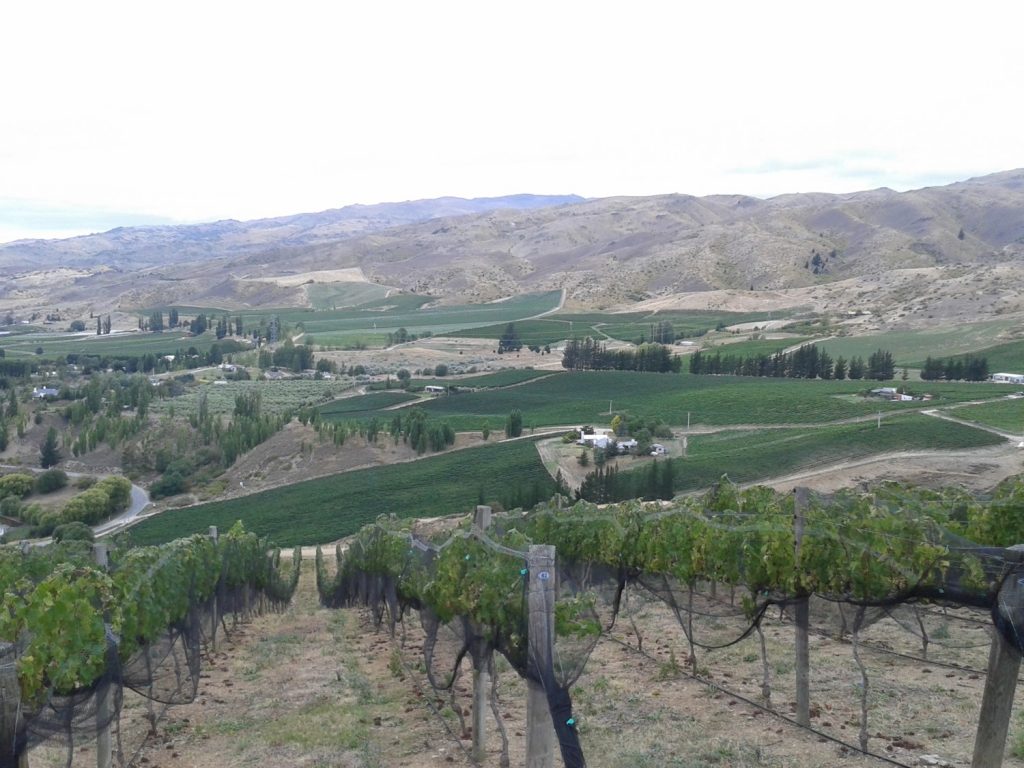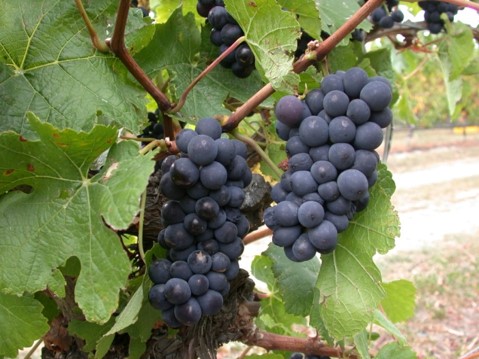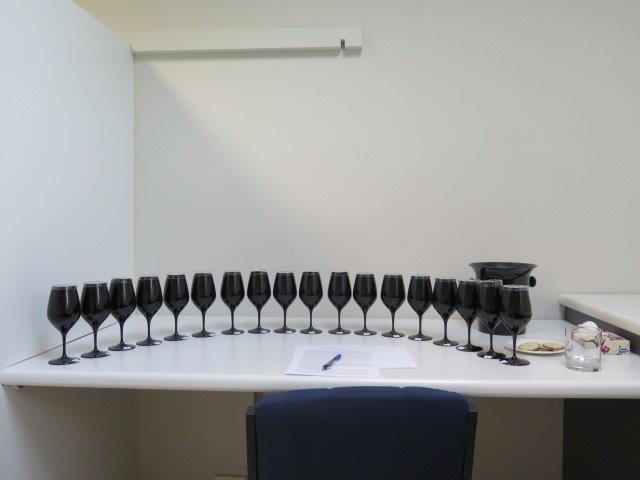By Wendy V. Parr
This post is based on a recently published article that investigated perception of quality, complexity and varietal typicality in Pinot noir wines. The full article, an international and interdisciplinary collaboration, can be found here:
https://www-sciencedirect-com.zproxy.lincoln.ac.nz/science/article/pii/S0963996920304488
Investigating a wine’s abstract qualities as opposed to its more concrete characteristics (e.g., intensity of floral notes) requires consideration not only of a taster’s sensory processes but also their cognitive processes (e.g., memories of wines tasted in the past). This is because judging abstract attributes of a food or beverage requires global or synthetic perception. Global or synthetic perception is involved when a wine is assessed in an integrating way, i.e., as a whole. In terms of sensorial processing, this type of perception involves multi-modal sensory input (e.g., tastes; smells; mouthfeel sensations) combining to form compound stimuli. For example, an odour and a taste may combine to form what is experienced as a ‘flavour’ by the taster, with neither individual sensation being easily separable or individually describable. Global perception contrasts with analytical perception where a taster attempts to deconstruct the wine into its separable components. In analytical perception, perceiving the separate components such as an odour and a taste does not lead to compounding of the separate elements.

An important aspect of global perception and stimulus compounding is that learning and experience influence how our neurons handle the combining of sensations such as tastes, odours, and mouthfeel qualities. This implicates higher-order cognitive processing in the form of prior experience, knowledge, ideas, expectations, and so forth, with these cognitive processes having greater opportunity to influence an abstract judgment than typically is possible in analytical tasks (e.g., when judging intensity of a concrete attribute such as strawberry aroma). Hence, those deemed to have expertise in a domain such as wine will bring to the task of assessing abstract, global characteristics an experiential history associated with evaluating the product of interest in a way that less-experienced people will not.

In our recent work, we investigated abstract concepts of quality, complexity and varietal typicality in New Zealand (NZ) Pinot noir wines from five NZ wine regions. Vitis vinifera L cv. Pinot noir produces one of the world’s fine wines, with prices paid being amongst the highest in the world for bottled wine. As a fine wine, the terms quality, complexity, and varietal typicality (i.e., a wine being perceived as true to the grape variety) are employed frequently by wine critics despite there being limited scholarly research defining precisely what these concepts mean. What we do know is that quality and complexity have been shown by researchers to be positive aspects of a wine, influencing consumer purchase and consumption behaviour. Hence, knowing what is encapsulated within such terms is an ethical issue as much as it is of interest to wine producers, marketing professionals, and scientists.

In keeping with the arguments above concerning synthetic perception, i.e., that valid assessment of a wine’s abstract qualities requires domain-specific expertise, we employed experienced wine professionals as tasters in our study, the aim of which was to investigate the nature of perceived quality and complexity in Pinot noir and their association with perceived varietal typicality. Major results are summarised here. First, and contrary to much anecdotal evidence, we demonstrated that for wine professionals, being able to see a Pinot noir wine’s colour and clarity was not a major driver of perceived quality. On the other hand, a particularly interesting result was that perception of quality and of varietal typicality were extremely highly correlated (+0.90), suggesting that the wine professionals saw these two aspects of Pinot noir wines as virtually synonymous. Specific characteristics important to driving both perceived high quality and good varietal typicality can be seen in Figure 1. The concrete attributes of intensity of fruit and floral aromas were important, but dominant were the global attributes of balanced acidity, overall structure, freshness, elegance/precision, concentration, softness/silkiness and expressiveness of a wine. These results support our hypothesis that experienced wine tasters bring synthetic or global perceptual abilities to the fore when judging higher-order (i.e., umbrella) terms or abstract qualities of a wine. Interestingly, the two attributes that rendered a wine low quality were based on analytical judgments, namely intensity of reductive notes and intensity of green characters.

[Note that perceived complexity was investigated via a different tasting task and those data are not reported in the above graphic.]
Perception of complexity in the Pinot noir wines was positively associated with both quality and varietal typicality but neither association was as high as that between quality and typicality. In keeping with judgments of quality and typicality, perceived complexity was driven largely by integrating attributes of a wine, namely harmony and balance. The ease with which the separate flavours and sensations of a wine could be separated and identified was not a significant driver of perceived complexity, supporting the theory that perception of complexity involves holistic or global perception, going beyond the individual elements of the wine and their perceptual separability. These recent results concerning the nature of perceived complexity in Pinot noir wines fit with our own prior research concerning perception of complexity in the white wine Sauvignon blanc, as well as with prior published research investigating the attributes driving complexity in other red varieties (e.g., Syrah; Tempranillo). It thus appears that the important drivers of perceived complexity are similar in red and white wines.
The above results concerning the nature of perceived quality and complexity have implications for wine producers aiming to produce and market high quality, Pinot noir wines.

Wendy is currently Principal Research Officer in the Faculty of Agriculture & Life Sciences, Lincoln University, New Zealand. She has a Ph. D. in Psychology (Cognition & Psychophysics) and a Ph. D. in Wine Science (Sensory). Wendy is also an oenologist. She has published extensively in peer-reviewed science journals, edited book volumes, and wine industry journals. She is an Associate Editor of several international journals including the American Journal of Enology & Viticulture. Over the last decade, Wendy has regularly spoken in keynote and invited-speaker roles at international conferences in France, Austria, Australia, Chile, Brazil, China, UK, Canada, and New Zealand. Her wine sensory research is theoretically driven and innovative in its integration of the psychological phenomena of perception, memory and judgment to help understand wine appreciation. Current research topics include perceived quality and perceived complexity in wine, perceived minerality in white wine, sensory characteristics of grape varieties Sauvignon blanc and Pinot noir, the concept of wine expertise, and cerebral representation of wines produced by various means of production (organic; biodynamic; Natural). Currently, she has international collaborative projects with the University Paris VIII and the University of Burgundy in France, and the University of Chile at Santiago, Chile.
Reference
Parr, W.V., Grose, C., Hedderley, D., Medel Maraboli, M., Masters, O., Araujo, L.D., & Valentin, D. (2020). Perception of quality and complexity in wine and their links to varietal typicality: An investigation involving Pinot noir wine and professional tasters. Food Research International, 137, 10.1016/j.foodres.2020.109423

